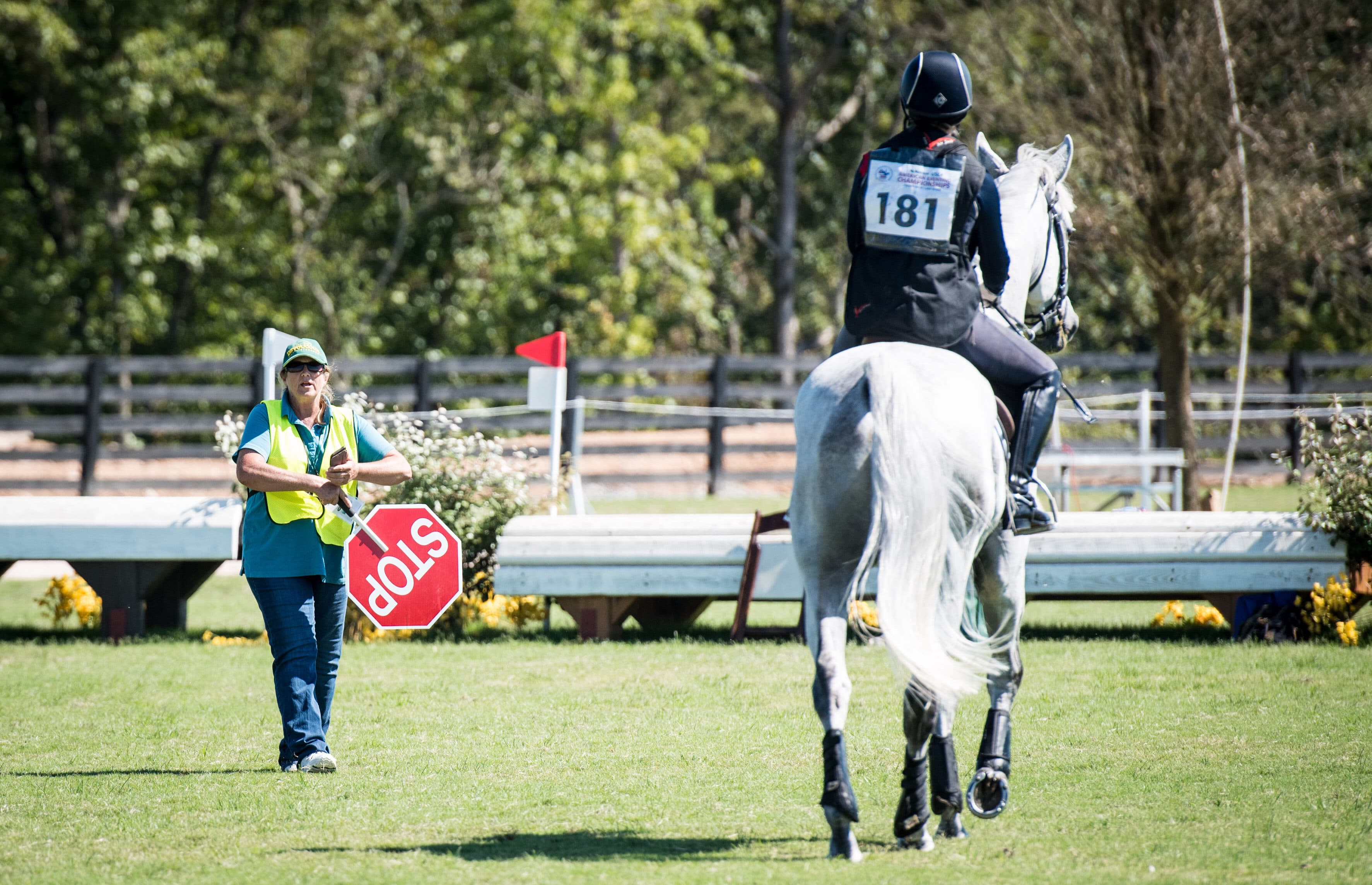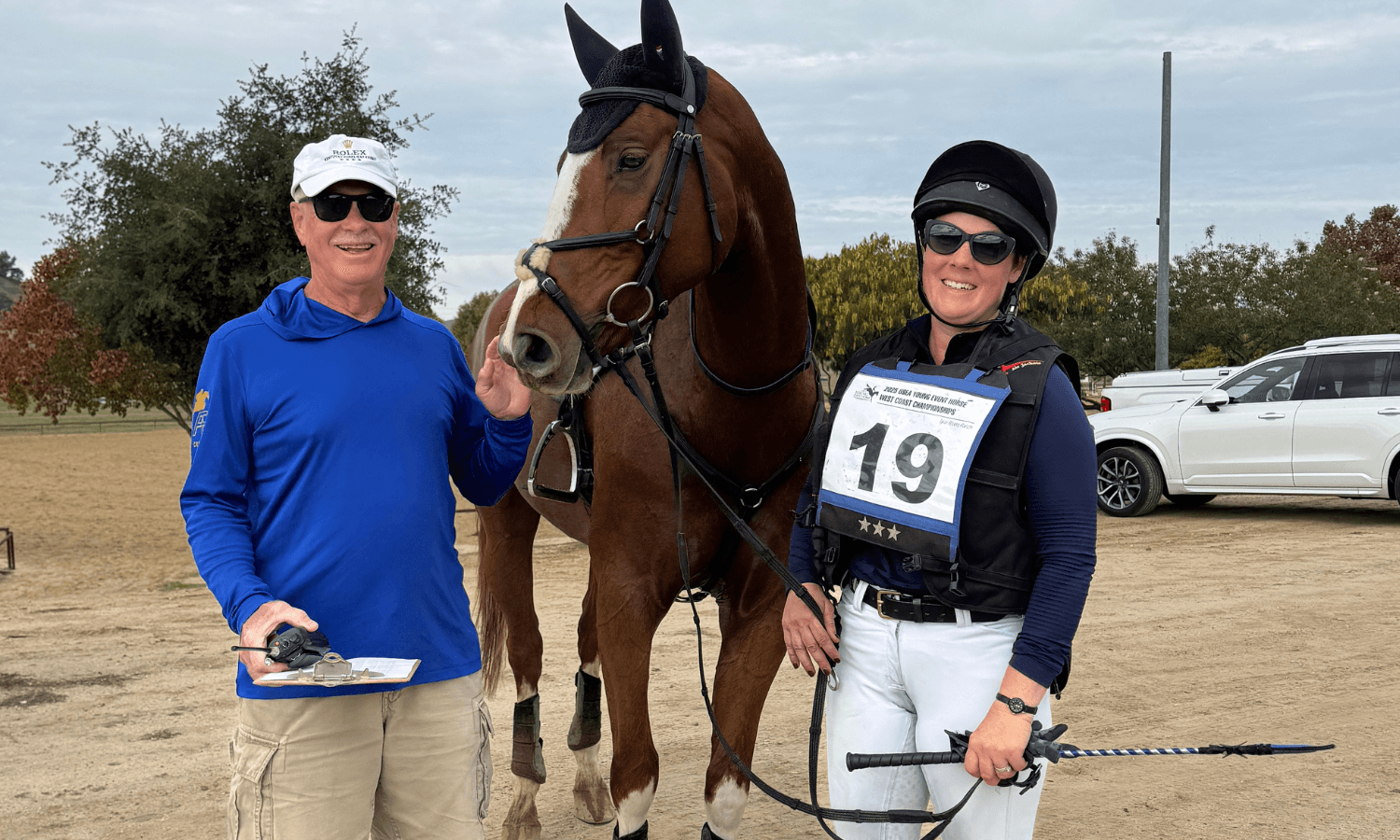Know Your Rules: EV 112 Dangerous Riding and EV 119 Athlete Representative

This article originally appeared in the March/April 2020 issue of Eventing USA magazine.
The USEA Eventing Licensed Officials Committee will be writing a series of articles relating to current rules from the USEF Rules For Eventing and how they are interpreted and implemented. The committee feels that transparency is important, and want to keep everyone current on the rules and how officials are expected/required to implement them.
EV 112 Dangerous Riding
1. Any competitor who rides in such a way as to constitute a hazard to the safety or well-being of the competitor, horse, other competitors, their horses, spectators, or others will penalized accordingly.
2. Any act or series of actions that in the opinion of the Ground Jury can be defined as dangerous riding shall be penalized by 25 penalties or elimination and/or the issuance of a Warning Card, at the discretion of the Ground Jury. In addition, the overall score for the horse/rider combination shall not be considered a National Qualifying Result.
3. If such actions are reported, the Ground Jury shall decide if there is a case to be answered. If an individual member of the Ground Jury observes such actions, he may eliminate or penalize the competitor forthwith on his own authority. There is no appeal against a Ground Jury decision.
4. The Ground Jury and the Technical Delegate have the authority to stop a rider on the cross-country course for dangerous riding, riding an exhausted horse, excessive pressing of a tired horse, riding an obviously lame horse, excessive use of the whip and/or spurs, or riding in an unsafe way.
5. The President of the Ground Jury may, in addition, designate one or several deputies (i.e. Eventing Officials up to the level for which they are licensed and not in an official function at the event, any Level III or IV USEA ICP Instructor or any rider who has represented the U.S. in a World Championship, Olympic Games, or Pan American Games) for the cross-country to advise the Ground Jury regarding any action described in 1 or 4 (above). Deputies and obstacle judges will be provided with a red flag to be waved at the rider, at the direction of Ground Jury, to stop the rider if the situation continues or if the infringement of the above is deemed to be serious.
Explanation
"The Dangerous Riding Rule shown above is the one we all have memorized by heart. As officials, we should not be afraid to use this rule if what we observe constitutes dangerous riding. It is important that the technical delegate (TD) and president of the ground jury (PGJ) have a discussion at the beginning of the competition about dangerous riding (DR). The organizer of the competition can also be included. This discussion is important because everyone should be on the same page about what constitutes DR. We as officials need to follow through on DR if we see it! We have a set of tools that we can use as officials, penalize by 25 points, elimination, and/or the issuance of a warning card. Also, there are times when one of the above situations don’t arise, but the competitor, and the coach if available, and a family member if the person is under age, then should be spoken to in a friendly educational way to share the concerns and get the competitors point of view."
"Sometimes, especially with our lower level riders, the rider really doesn’t know or understand why something is dangerous. Dangerous riding is one of those things that you will know when you see it. It can be too slow or too fast; it can be a horse running away with a competitor; a competitor that jumps a boundary rope with the horse; a person that goes off the course into a un-mowed field; a person that is constantly circling a horse on course; a horse jumping from a standstill; or a competitor getting a horse under control and then the horse takes off again. I am sure you can add other scenarios."
"Another trick of the trade that should occur is that the TD should brief the warm-up steward for the different phases about keeping an eye out for dangerous riding and give them some scenarios. Just like we want them to call us if there is a fall in warm-up, we also want to know about possible dangerous riding scenarios in warm-up. It gives us an opportunity to go and see for ourselves."
"The important takeaway here is that if we see it, we need to follow through and investigate to see if there is a case. We should act if it is dangerous riding and do it in a professional, kind manner."
EV 119 Athlete Representative
1. Prior to the Athletes’ first opportunity to inspect the cross-country course, every Organizer of an event must name one or more Athlete Representative(s) from among the Athletes taking part in the competition, having first obtained the Athlete(s)’ consent. The Athlete Representative has the task of acting as a channel of communication between the Athletes and the Officials on any matter directly connected with the event without in any way removing the right of any Athlete to speak to the Organizer, Technical Delegate, Ground Jury or Course Designer. The Athletes must be notified as to identity of the Athlete Representative and his/her name and contact information must be prominently posted on the event notice board.
2. Prior to 18:00 hours the day before cross-country, the Athlete Representative(s) may call a meeting of the Athletes, to be attended by the Technical Delegate. The Ground Jury, Organizer, or Course Designer will also attend if specifically requested by the Athlete Representative. The purpose of this meeting is to discuss major issues concerning the obstacles on the course and/or the distances of the course. At this meeting any such issues must be recorded in writing (the Technical Delegate and Athlete Representative have this responsibility) and the response of the Ground Jury also recorded in writing and signed by the President of the Ground Jury and the Athlete Representative. This document will be included with the Technical Delegate’s report.
3. The Athletes may appoint two additional people (to join the already appointed Athlete Representative) as Athlete Representatives to facilitate discussion with the Officials and the Organizing Committee. These additional two people can be anyone that the Athletes choose and do not necessarily have to be competing at the Competition.
Note: This added layer of participation by the Rider Representative does not in any way lessen the burden each competitor bears to actively voice his or her concerns either to a) the Rider Representative who will then communicate said concerns to the TD or PGJ or b) directly to the TD or PGJ. Further, competitors bear the responsibility in determining their own and their horse’s fitness, preparation and readiness. Communication of concerns to the Rider Representative, TD or PGJ does not remove nor shift that responsibility away from the rider.
Explanation
"Recently our committee was asked to address how to best handle the concern of riders about fences on cross-country. This individual had a concern about a fence that was not easily visible for the horse to see. The competitor requested that the fence have some paint added, maybe a brush added, maybe a piece of tape to help the horse better understand through a color contrast the question that was being asked. The competitor shared that the request was denied and that multiple horses hit the fence and the fence was also clipped and the clip was activated. The question from the competitor was how best to handle this type of situation?"
"These types of requests are reasonable and as officials we have the responsibility to hear out competitors – whether they are the rider representative, upper level competitors, lower level competitors, adults, young adults, or the public with concerns about fences. EV 119 Athlete Representative from the USEF Rules for Eventing addresses the Athlete Representative and the formal route that riders may take."
"We would hope that a formal meeting would not be required, but that the TD, the PGJ, and the course designer would be able to have an open discussion about fence concerns and discuss practical options for a resolution. It is very much part of our jobs as officials to take these concerns seriously. Sometimes it may seem that it is a frivolous request, but there is no such thing, and all of our competitors have a right to voice their concerns in a professional manner and we should discuss these with them in a professional manner without becoming defensive on either side. Ultimately, we all have the same goal, which is to have a safe, fair, and level playing field for all competitors."
Please send questions or other topics that you would like to see discussed to Nancy Knight at [email protected].
Did you enjoy this article? Want to receive Eventing USA straight to your mailbox? Members receive Eventing USA as part of their USEA Membership or you can purchase individual issues from the USEA Shop.














